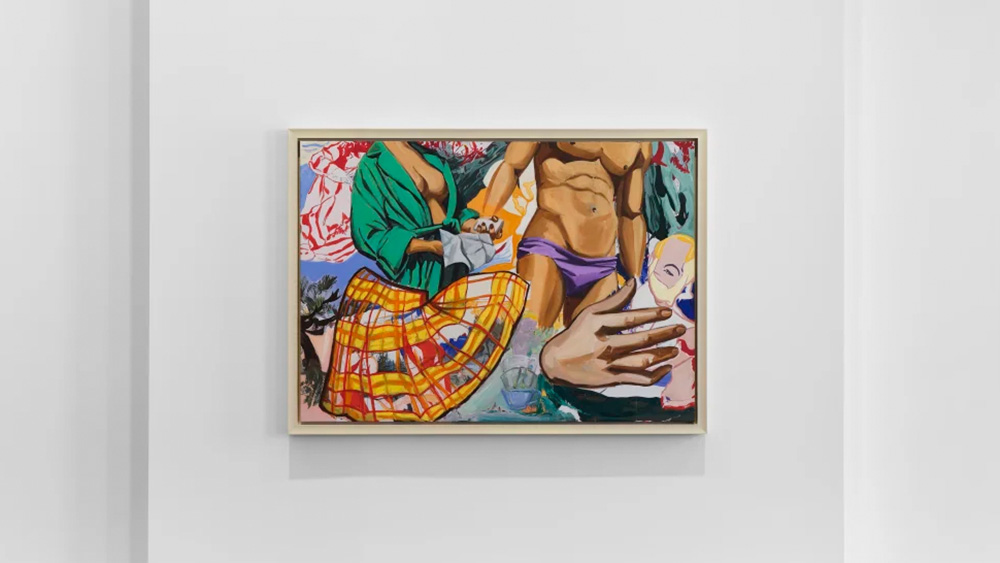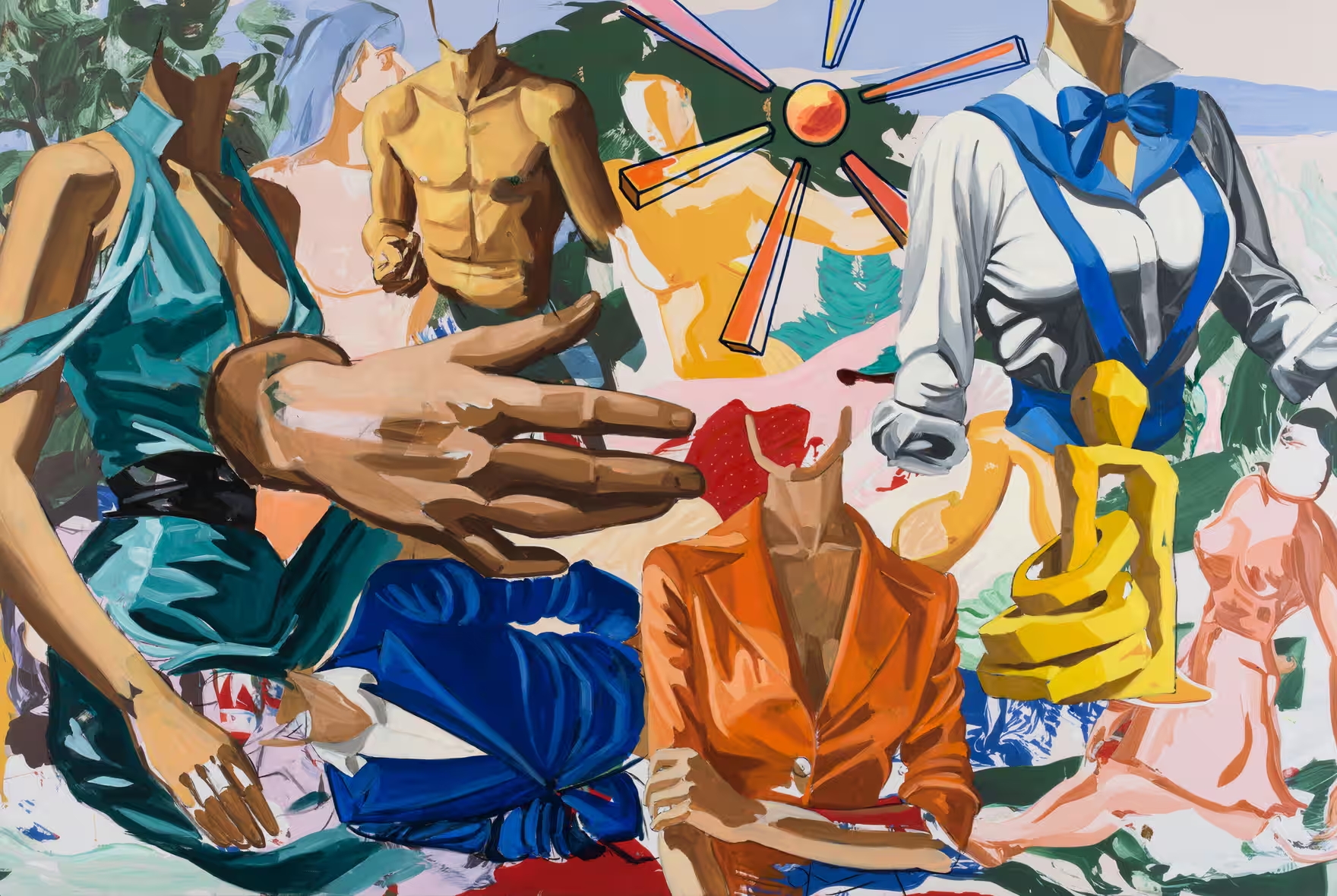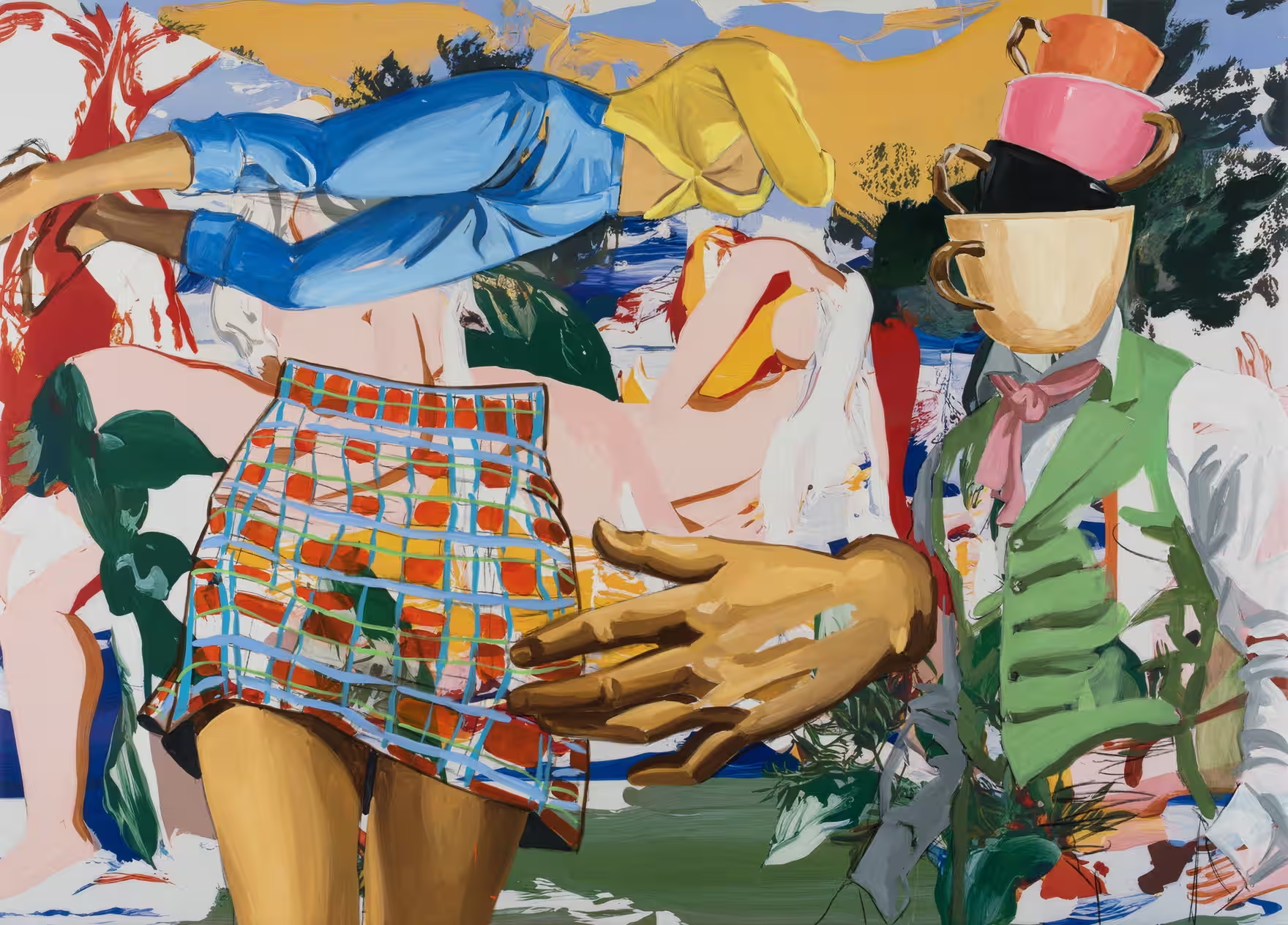
Many artists want to keep AI well away from their work, but not David Salle. He's embracing the tech, going as far as to train an AI model to copy his style and make new paintings for him (or at least get them started).
As we saw in our history of AI art, there's a long tradition of artists exploring the use of algorithms to create art. Many come from a multimedia background, but Salle is a more traditional artist who decided to let AI image generation loose on his own work. Has he grown lazy – or can AI really add something?

A star of the New York art scene in the 1980s, Salle is known for his multilayered postmodernist juxtapositions. He's lifted liberally from other works, from Caravaggio to Donald Duck, in his time, so it's perhaps natural that he would be drawn to the idea of using AI to sample his own style.
In Some Versions of Pastoral, an exhibition now running at Thaddaeus Ropac London, the monumental pieces on display don't immediately smack of AI art. From a distance, they look like hand-painted oils.
It's only when you go in close that you see the digitally printed underpainting. That's the work of an AI model that Salle trained to generate something that he suggests could be work he might have made if he had infinite time to allow his style to evolve.

Salle's experiments with AI began with an idea for a virtual game where players could rearrange elements from his paintings. That didn't come to fruition, but he started working with software engineer Danika Laszuk of E.A.T__Works and Grant Davis, creator of the AI sketching app Wand.
They decided to train a custom version of Stable Diffusion on Salle's work. At first, it was a bad student, turning out the kind of cartoonish images we expect from AI. The problem, Salle found was that pixels have no edge, something he sees as a defining feature of artistic style.
The first attempted solution was to try to train the AI model the way that he had studied art himself. He fed it the work of famous artists selected for specific aspects of their approaches: Andy Warhol for colour, Edward Hopper for creating volume with light and shadow, Giorgio de Chirico for extreme perspective, Arthur Dove for his use of black.
But Salle says the transformation came later when he trained the model further by feeding it scans of thick-brush sketches he made himself. He says this changed the model's way of thinking, helping it to read the physicality of the brush stroke.
"I thought, let's train the thing how I was trained when I was a little kid in art school," Salle told The Art Newspaper in an interview. "You learn how to look at these artists for their certain formal qualities. But it wasn't actually the thing that led to the interesting results. It was a number of fairly quickly executed brush paintings that allowed the machine to get a hold of the idea of what an edge is and how to use that.”
To produce the latest work on display, Salle further trained the AI on a dozen of his stylised colour palette-jumping Pastorals paintings from between 1998 and 2000 (see 'Fishing' above) The result – New Pastorals – is something like a mix of elements from his work.
The paintings have a chaotic randomness that suggests a lack of meaning – like the model's randomly dicing and splicing pieces of his work. That could be expected from AI. But it doesn't feel like a pastiche. There is something new there too. With freer, looser strokes, at a distance they actually look more hand-painted than the original Pastorals.
Salle suggests that he's still in control. In an interview with The Guardian, he states: “I don’t think the machine’s taught me very much at all. I haven’t reconsidered how I think about pictorial space or composition. I’m simply taking what the machine offers after I’ve told it what I want.”
Some Versions of Pastoral is running at Thaddaeus Ropac London until 8 June.
For more AI news, see all the announcements from Adobe Max London, including third-party AI in Firefly and new Photoshop updates.







